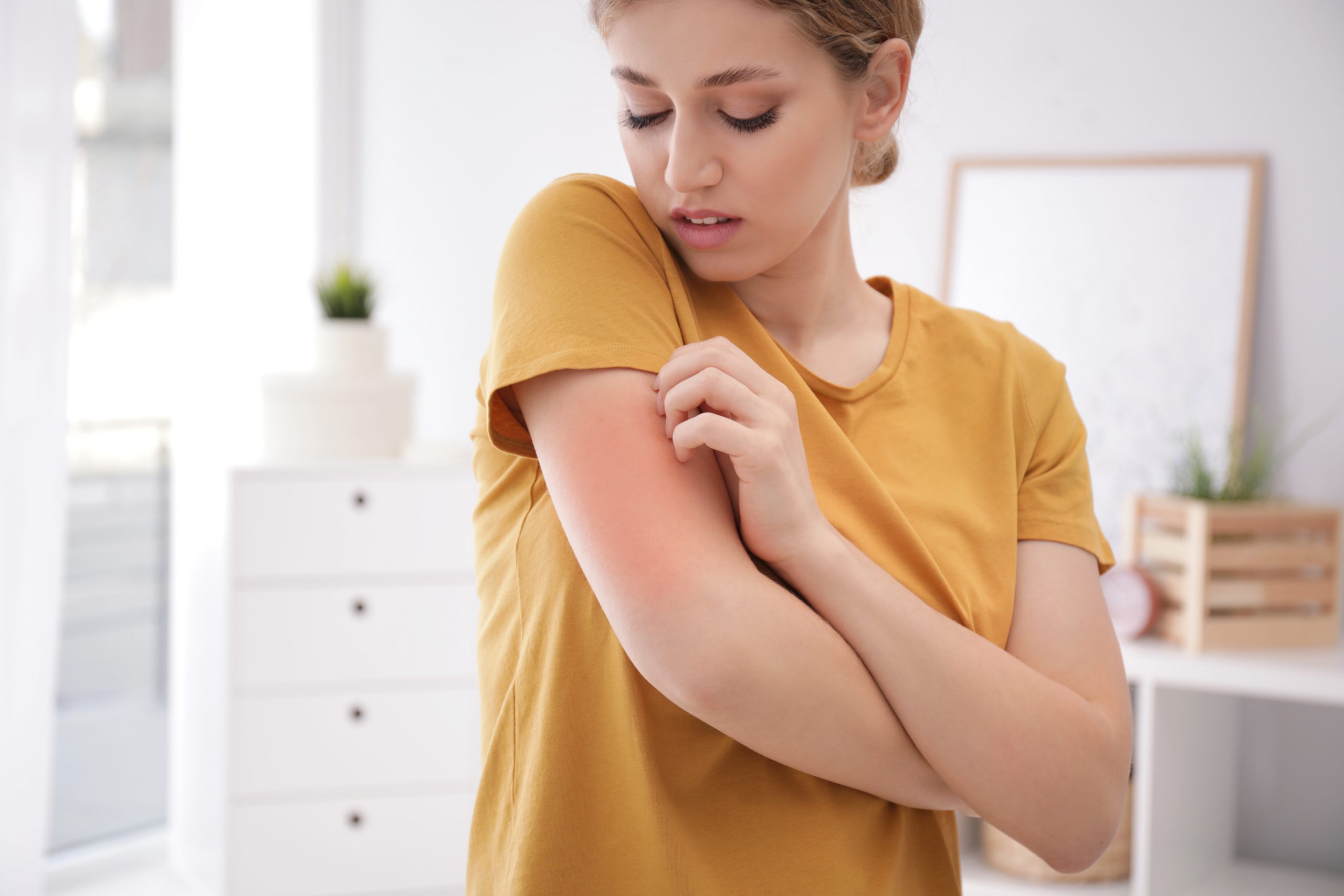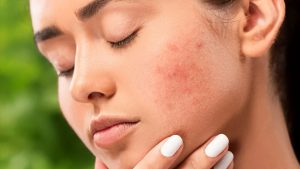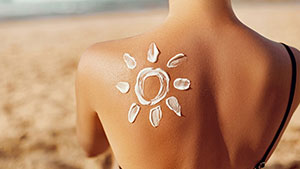How To Properly Identify a Stress Rash

Stress can have many negative repercussions on the body, but did you know it can impact your appearance, too? Some people have a physical reaction to stress, known as a stress rash. If you’ve ever seen your skin break out and get red when you’re under pressure, you may experience stress rashes.
Although it would be nice to just cut stress out of our lives, that isn’t realistic. With that in mind, the skincare experts at Miami MD can help you learn how to identify a stress rash and what you can do about it.
What Does a Stress Rash Look Like?
First of all, what does a stress rash look like?
In most cases, a stress rash presents as hives (sometimes called wheals or welts). In general, you’ll notice:
- -Blotchiness (or irregular patches)
- -Itching
- -Puffiness
- -Redness (which is more noticeable on lighter colored skin)
- -Swelling
Hives can appear anywhere on the body, at any time. Although they may start small with red bumps like a classic rash, stress rashes can quickly spread and worsen. The hives themselves can become more extensive with scratching, although scratching can be hard to avoid when rashes are at their itchiest.
They can appear to be as small as a pinpoint or as large as a dinner plate. Often, larger hives occur when smaller ones connect. Stress rash hives are also “blanchable,” which means they briefly turn white when pressed.
Rashes and hives are often mistaken for each other. However, there are minor differences between the two. Skin rashes are defined by a sudden change in color, appearance, or texture on the skin. Hives are a type of skin rash (known as urticaria) caused by histamine, a chemical produced as an immune response.
How To Identify A Stress Rash
Identifying whether you are dealing with a stress rash or another skin condition comes down to looking at your rash triggers.
Have you changed your routine or introduced any new detergents, skin care products, or foods? In most cases, rashes are triggered by a change in your physical environment.
If you can’t identify a physical trigger, focus on possible stressors. If you’ve been under more stress than usual or if you’ve experienced building pressure, your rash may be caused by an emotional trigger instead of a physiological one.
Stress rashes are more likely if you are a woman between 30 and 50 or have experienced allergic hives in the past.
You can develop a stress rash on any part of your body, but they are most likely to occur in a few specific areas:
- -Arms
- -Back
- -Face
- -Hands
- -Legs
- -Toes
Unfortunately, something uncontrollable, like stress, can trigger physical reactions. Identifying what might be causing your stress and ruling out external factors can take you one step closer to getting rid of your rashes.
Why Do Stress Rashes Happen?
We’ve all experienced stress, but how does that stress translate into a physical response? The key to understanding stress rashes is learning more about histamine.
Histamines have been called the body’s “bouncers.” When your body comes into contact with something bothersome, like an allergen, your immune system releases histamine chemicals in response.
Once given free rein, histamines begin removing that allergen from the body. Their methods are effective, but they may cause you to sneeze, itch, or tear up. Typically, this completely removes the allergen. In some cases, though, histamines become overachievers.
When your body overreacts and triggers too many histamines, you’ll experience a more severe response to triggers, including inflammation. If you have allergies, you have probably experienced these allergy-related rashes more than a few times.
Unfortunately, it isn’t just outside allergens like pollen or pet dander that can set off a histamine response. Stress can also trigger the release of histamine.
Stress releases histamine because your body recognizes stress for what it is — a danger to the body. Although it’s mental and not physical, the body handles this threat physically. The worse your stress level, the more likely you are to experience stress rashes.
Stress Can Also Worsen Pre-Existing Skin Conditions
In addition to triggering rashes, stress has the potential to worsen other pre-existing skin conditions. Stress tends to suppress the immune system. With less available immune cells to fight off germs and flare-ups, the body is susceptible to an onslaught of symptoms.
What To Do About Stress Rashes
If you’re experiencing a stress rash, what can you do about it?
Identify Your Stressors
First, know how to identify your stress. You won’t find the cause overnight, but reducing your stress will reduce the frequency of your rashes.
Identifying your triggers and avoiding them when you can go a long way. Beyond that, this practice will help you predict stress rashes before they appear. This way, you can anticipate future treatment and prepare in advance.
Develop A Mindfulness Practice
If you’re experiencing frequent stress rashes, you may want to start a mindfulness practice. Mindfulness is a state of awareness that you can achieve through meditation and wellness practices.
When you practice mindfulness, you can ground your experiences in a new frame of mind. Even the tough stuff in life is temporary, and you cannot predict your future. Stress is often the fear of the unknown, and remaining present can help you release that fear and reduce your stress.
When To See A Doctor
In rare cases, the hives associated with stress rashes can become a more dangerous problem known as angioedema. Angioedema impacts deeper layers of the skin, which leads to a broader range of symptoms.
Swelling of the face, trouble breathing, wheezing, and dizziness are common in angioedema patients and should receive immediate professional care. If this is your first time experiencing a stress rash, you should seek medical attention to help ensure angioedema doesn’t develop.
Home remedies can successfully treat most mild stress rashes at home. Cool compresses applied directly to the area and oatmeal baths in lukewarm water are great places to start. There are also over-the-counter medications available but always check with your doctor before starting a new medication.
How Long Do Stress Rashes Usually Last?
Even without treatment, most stress rashes don’t last longer than a few hours. However, in some cases, they can last for days. If you’ve had a stress rash for over a day, you should seek medical care.
Scratching at your hives can lengthen the time it takes for the rash to heal. Scratching can also increase your risk of infection because it creates more vulnerable, broken skin. Do whatever you can to avoid itching. Instead, try gently patting at your hives or taking an oatmeal bath.
How Do Stress Rashes Impact Your Skincare Routine
Hives and rashes can throw a wrench into your everyday supportive skincare routine. Although it may seem counterintuitive, you may need to change your skincare routine as you work to manage your flare-ups.
With that said, you should only subtract products from your routine during an active rash instead of adding new products. You’ll want to avoid exfoliants, retinol, or other irritating ingredients, even if you’ve been using them for a while. This is especially true if you have hives or a rash on your face.
Simplify your routine to the bare essentials — a gentle cleanser, a non-irritating serum, and a gentle moisturizer. Don’t start new products, even those marketed toward people with sensitive skin, unless specifically recommended by your doctor or dermatologist.
Also, it’s best to avoid using hot water when you wash your face or take a shower. This is a general recommendation for everyone—even those without stress rashes—but heat can cause an active rash to worsen.
In Summary
Stress rashes can make an already stressful situation even worse. When your internal stress level shows on the outside, it’s time to take your power back.
Don’t let life impact how you look and feel about yourself. Miami MD wants you to be armed with all the information you need to identify a stress rash so that you can get to work resolving it.
Sources:
An approach to the patient with urticaria | PubMed
How Does Stress Affect the Immune System? | UMMS Health
What to Do When Stress Gives You Hives | The American Institute of Stress





